W4A Day Two: Policies, profits, and producing more wheat
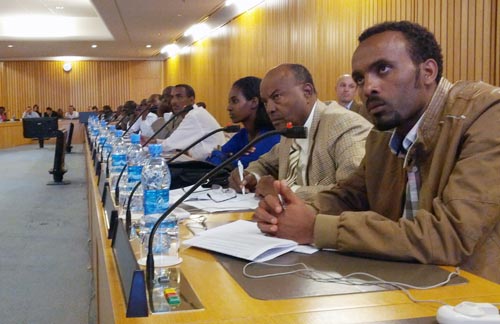 An exhausting, productive day on Day Two of Wheat for Food Security in Africa. Participants arrived bright and early for expert presentations and round-table discussions on abiotic/biotic stresses, market and seed systems, wheat systems and quality, and country outlooks.
An exhausting, productive day on Day Two of Wheat for Food Security in Africa. Participants arrived bright and early for expert presentations and round-table discussions on abiotic/biotic stresses, market and seed systems, wheat systems and quality, and country outlooks.
After lunch things got really interesting as participants gathered to discuss the key constraints for having profitable, productive wheat systems in Africa, and how we can overcome these. One rapporteur from each group presented the findings and these will be consolidated tomorrow before we present the findings to key policy makers, ministers, and donors on Thursday. Here are some things I learnt today…
We can do more if we act together
And this applies on so many levels. Farmers in Africa generally produce crops from very small parcels of land. This discourages large investments on their behalf, because they will never be able to get large returns from just a small area. Some scientists suggested that farmers should join together and farm larger plots. The same applies for inputs such as fertilizer and seed. One of the reasons these things are so expensive in Africa is due to the high transaction costs; if farmer cooperatives bulk-bought these inputs, they would be able to pass on the savings to the farmers themselves. At a national level, participants called for a strengthening of seed systems, and this includes encouraging the involvement of the private sector. Finally, as Hans Braun, Director of CIMMYT’s Global Wheat Program, pointed out, whilst we have many regional agricultural organizations in Africa, such as ASARECA, CORAF, and CCARDESA, “they do not know each other”. If international trade, regulations, and wheat policies are to be improved, it is key that all these players work together.
A value chain is only as strong as its weakest link
Breeders work hard to develop new, disease resistant, high-yielding varieties, yet many farmers do not know about them, and the yield difference between experimental stations and farmers’ fields can be huge. This is not to say that farmers are at fault, or in fact that any one part of the value chain is. It comes back to the above point of working together. We need extension workers to inform farmers about new varieties and to disseminate the improved technologies for agronomy and farm mechanization. We need government support to fund these extension workers. We need policymakers to inform government of the needs of the agricultural sector. But as pointed out by Victor Kommerell, Program Manager for the WHEAT CRP, the research heads of national systems are policymakers, too. And it’s not just the politicians we want to influence and get their attention, it’s the millers, the seed companies, the grain traders, in fact, anyone with a vested interest in wheat should be listening to African researchers and learning about the huge market that exists on this continent.
There is a solution for wheat in Africa
It’s simple maths. Increased revenues and decreased production costs equal increased profits and greater incentives for growing wheat in Africa. Aside from the points mentioned above, it’s clear we need more research and knowledge, and for this knowledge to be shared between researchers, governments, extension workers, community leaders, farmers. Timely access to fertilizer is a major problem for Africa, but we could overcome this by increasing capacity in fertilizer production, assisting farmers with credit access, and ensuring that everyone who needs to use fertilizer knows exactly how much to use and when to apply it. Human capacity is also key and countries must invest in their own agricultural researchers and extension workers. And none of these things will be truly successful without effective communication at all levels.
With a whole day of discussions, it’s hard to do little more than scratch the surface in a 600-word blog. Hopefully you have a little insight into our progress in Addis Ababa,
and we’re looking forward to bringing you more updates from the conference on Thursday. Tomorrow you can still follow us as we go to the field – look for our twitter hashtag #W4A and join us as we visit research stations and farmers at Kulumsa and Debre Zeit. You can also read what other people have been saying about the conference; so far, we have had stories published on La Presse, Bloomberg, Reuters, Scientific American, Phys.org, Voice of America, Deutsche Welle, and Times Live.
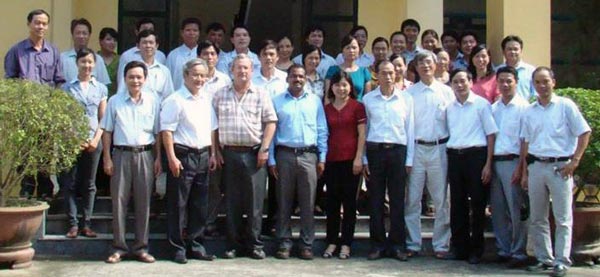
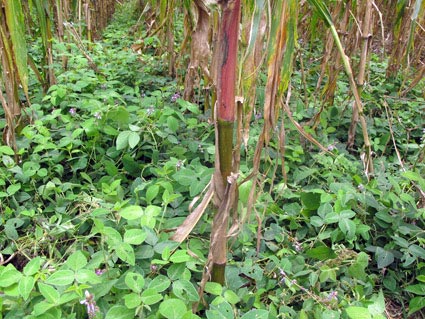 Longer periods of drought and erratic and below-average rainfall in western Kenya have been making farming increasingly difficult over the years. In combination with declining soil fertility and deep-rooted practices of low-farm input application, agricultural productivity in the region has been on steep decline, leaving many farmers desperately staring at famine. However, with introduction of conservation agriculture (CA) via the Sustainable Intensification of Maize-Legume Cropping Systems for Food Security in Eastern and Southern Africa (
Longer periods of drought and erratic and below-average rainfall in western Kenya have been making farming increasingly difficult over the years. In combination with declining soil fertility and deep-rooted practices of low-farm input application, agricultural productivity in the region has been on steep decline, leaving many farmers desperately staring at famine. However, with introduction of conservation agriculture (CA) via the Sustainable Intensification of Maize-Legume Cropping Systems for Food Security in Eastern and Southern Africa (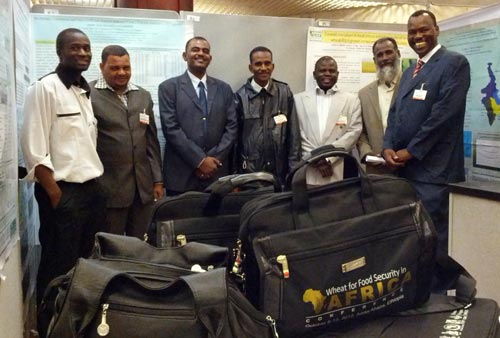
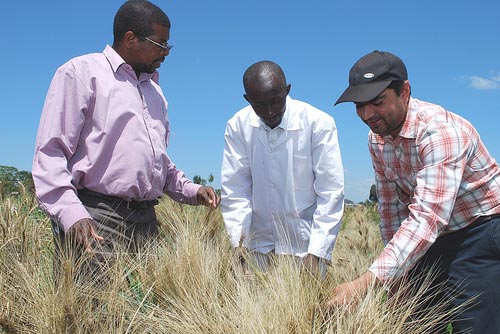
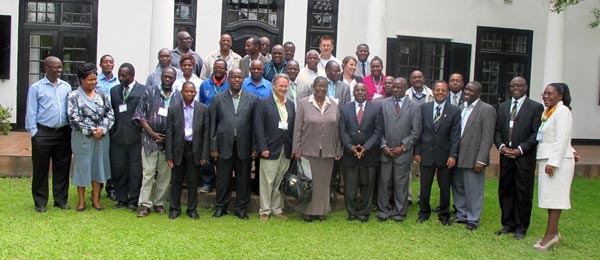
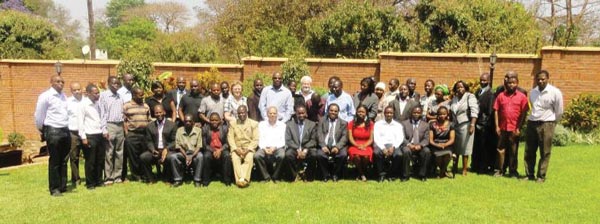
 The Hill Maize Research Project (
The Hill Maize Research Project (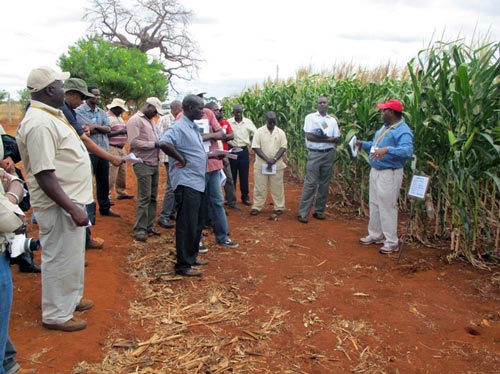 Twenty-nine drought-tolerant, early maturing, disease-resistant hybrids developed by the Water Efficient Maize for Africa (WEMA) project are getting ready to be released, a huge success for WEMA and all its stakeholders. “The 29 hybrids advanced to national performance trials is a record release by an entity in Africa in all times. These high performing hybrids yield 20–35 % more grain under moderate drought compared to 2008 commercially available hybrids,” said Stephen Mugo, CIMMYT principal scientist and co-chair of the WEMA Product Development Team. “Let us seize the technological opportunities that are there to boost productivity and people’s welfare,” he added. The white hybrids resistant to stem borers, maize weevils, and large grain borer, and to diseases such as grey leaf spot, northern leaf blight, and maize streak virus will complement other drought tolerant hybrids developed and released by the Drought Tolerant Maize for Africa (
Twenty-nine drought-tolerant, early maturing, disease-resistant hybrids developed by the Water Efficient Maize for Africa (WEMA) project are getting ready to be released, a huge success for WEMA and all its stakeholders. “The 29 hybrids advanced to national performance trials is a record release by an entity in Africa in all times. These high performing hybrids yield 20–35 % more grain under moderate drought compared to 2008 commercially available hybrids,” said Stephen Mugo, CIMMYT principal scientist and co-chair of the WEMA Product Development Team. “Let us seize the technological opportunities that are there to boost productivity and people’s welfare,” he added. The white hybrids resistant to stem borers, maize weevils, and large grain borer, and to diseases such as grey leaf spot, northern leaf blight, and maize streak virus will complement other drought tolerant hybrids developed and released by the Drought Tolerant Maize for Africa (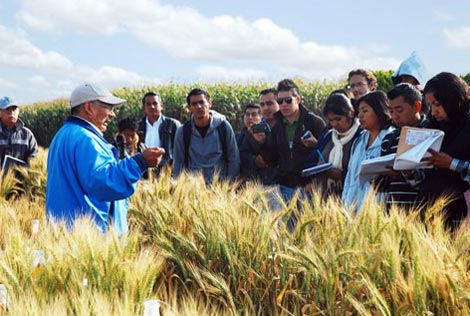 On 21 September 2012, CIMMYT-El Batán opened its doors to 280 students, accompanied by their professors, from 14 Mexican universities for the 6th “Open Door” event. This year, students visited the wheat and maize programs, conservation agriculture demonstration plots, the germplasm bank, and biotechnology and cereal laboratories.
On 21 September 2012, CIMMYT-El Batán opened its doors to 280 students, accompanied by their professors, from 14 Mexican universities for the 6th “Open Door” event. This year, students visited the wheat and maize programs, conservation agriculture demonstration plots, the germplasm bank, and biotechnology and cereal laboratories.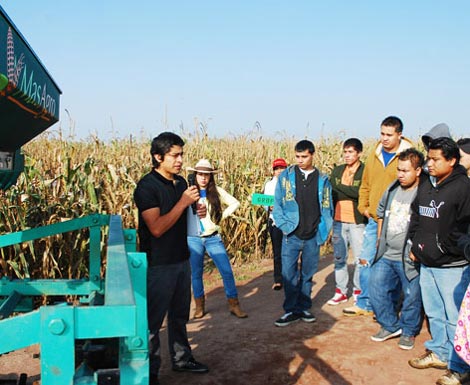 Ma. de Lourdes de la Isla, emeritus researcher and professor at Colegio de Postgraduados (CP), sent a thank-you letter to the CIMMYT Training Office, saying the event“provided a very valuable source of knowledge.” She also praised the professionalism of the organizers and presenters. Special thanks to all the presenters, and to Daniela Flores Castillo and Norma Hernández for coordinating the logistics.
Ma. de Lourdes de la Isla, emeritus researcher and professor at Colegio de Postgraduados (CP), sent a thank-you letter to the CIMMYT Training Office, saying the event“provided a very valuable source of knowledge.” She also praised the professionalism of the organizers and presenters. Special thanks to all the presenters, and to Daniela Flores Castillo and Norma Hernández for coordinating the logistics.
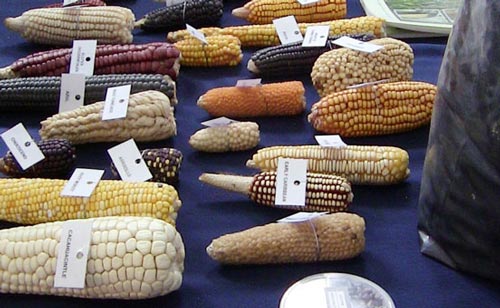 National Service Seed Inspection and Certification (
National Service Seed Inspection and Certification (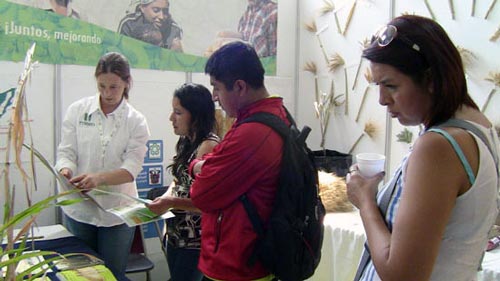 CIMMYT participated in the fair through its Seeds of Discovery (SeeD) initiative under the Genetic Resources Program. Martha Willcox (SeeD maize phenotyping coordinator) and Carolina Saint Pierre (SeeD wheat phenotyping coordinator) presented maize and wheat collections from the CIMMYT genebank and a poster prepared by Paulina González and Bibiana Espinosa from the germplasm bank emphasizing the importance of seed conservation and its long-term benefits for humanity. CIMMYT team was also represented by Isabel Peña, Institutional Relations Head, who provided visitors with information on CIMMYT. The CIMMYT booth was visited by many students, professors, and farmers. The students and professors expressed a particular interest in CIMMYT’s publications on maize and wheat diseases, conservation agriculture, the SeeD initiative, breeding for drought and low nitrogen tolerance, breeding of native maize (criollos), and grain storage techniques. Farmers were mostly interested in CIMMYT maize collections samples. They also shared their experience working with different types of maize.
CIMMYT participated in the fair through its Seeds of Discovery (SeeD) initiative under the Genetic Resources Program. Martha Willcox (SeeD maize phenotyping coordinator) and Carolina Saint Pierre (SeeD wheat phenotyping coordinator) presented maize and wheat collections from the CIMMYT genebank and a poster prepared by Paulina González and Bibiana Espinosa from the germplasm bank emphasizing the importance of seed conservation and its long-term benefits for humanity. CIMMYT team was also represented by Isabel Peña, Institutional Relations Head, who provided visitors with information on CIMMYT. The CIMMYT booth was visited by many students, professors, and farmers. The students and professors expressed a particular interest in CIMMYT’s publications on maize and wheat diseases, conservation agriculture, the SeeD initiative, breeding for drought and low nitrogen tolerance, breeding of native maize (criollos), and grain storage techniques. Farmers were mostly interested in CIMMYT maize collections samples. They also shared their experience working with different types of maize.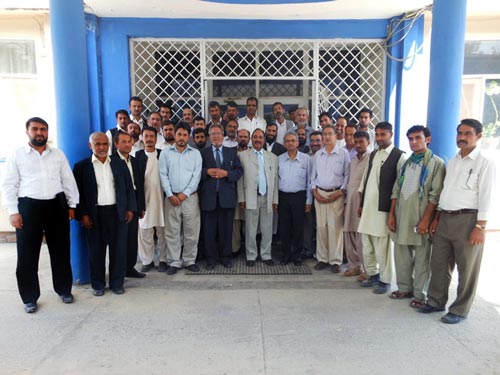
 The CIMMYT team in Bangladesh hosted a highprofile field visit on September 1, 2012, for a United States Agency for International Development (
The CIMMYT team in Bangladesh hosted a highprofile field visit on September 1, 2012, for a United States Agency for International Development (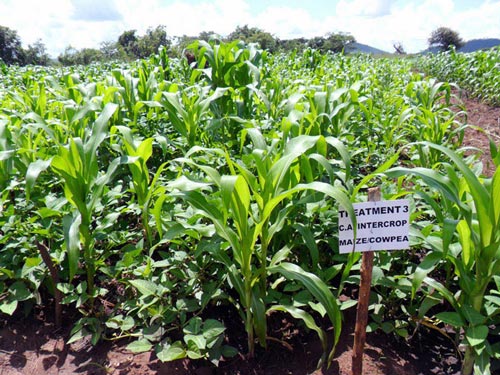 To reduce farm labor, improve soil productivity and crop yields, and contribute towards food security of farming households in the changing climate environment, CIMMYT, the
To reduce farm labor, improve soil productivity and crop yields, and contribute towards food security of farming households in the changing climate environment, CIMMYT, the 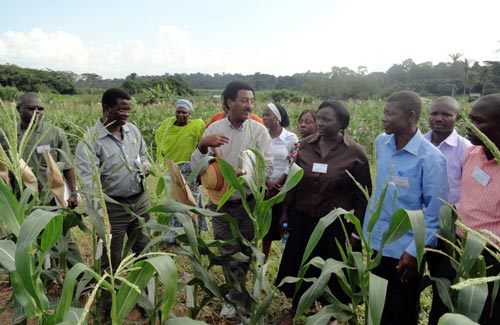 Having experienced CA, both Tembo and Zulu hope that more farmers will adopt the practice. “This project should continue so that others can learn from us that we do things differently now,” she added. Learning about CA has enabled Tembo to lessen the challenges her family faces, especially the tedious labor in preparing the field. Zulu is proud to see that other farmers admire what they see on his farm.
Having experienced CA, both Tembo and Zulu hope that more farmers will adopt the practice. “This project should continue so that others can learn from us that we do things differently now,” she added. Learning about CA has enabled Tembo to lessen the challenges her family faces, especially the tedious labor in preparing the field. Zulu is proud to see that other farmers admire what they see on his farm.